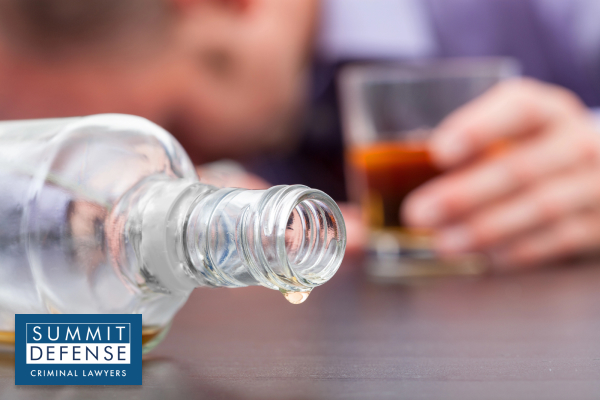1. Type and Strength of Alcoholic Beverage
Different types of alcohol contain different amounts of alcohol. The alcohol content in a beverage affects how quickly it enters the bloodstream.
Drinks with higher concentrations of alcohol, such as hard liquor, are absorbed faster than beer or wine. Carbon dioxide in carbonated drinks, like champagne and mixed cocktails, speeds up absorption by forcing alcohol into the small intestine more quickly. On the other hand, diluted drinks slow the process down.
The type of drink and whether it is consumed alone or mixed also impact BAC levels. Drinking high-proof alcohol on an empty stomach increases the risk of reaching dangerous levels of intoxication.
2. Food Intake Before and During Drinking
Food slows the absorption of alcohol by delaying its movement from the stomach to the small intestine. When alcohol stays in the stomach longer, BAC rises at a slower rate.
Eating before drinking reduces the effects of alcohol. High-protein and high-fat foods, like meat and cheese, help slow absorption. However, once alcohol reaches the small intestine, absorption speeds up again.
People who drink on an empty stomach experience a faster rate of absorption, leading to higher BAC levels in a shorter period of time.
3. Body Weight and Composition
A person’s body weight and body composition impact how alcohol is distributed. Heavier individuals tend to absorb alcohol more slowly because they have more body water, which dilutes alcohol.
People with higher lean body mass process alcohol differently than those with more adipose tissue (fat). Since fat does not absorb alcohol well, individuals with a higher percentage of body fat may have higher BAC levels than those with more lean tissue.
This is why alcohol affects individuals differently, even when they drink the same amount.
4. Metabolism and Enzyme Activity
The enzyme alcohol dehydrogenase (ADH) plays a major role in alcohol metabolism. This enzyme breaks down alcohol in the liver, determining the rate of alcohol metabolism.
People with higher levels of alcohol dehydrogenase process alcohol more efficiently. Those with lower enzyme levels or liver conditions may take longer to metabolize alcohol. This leads to longer-lasting intoxication and higher BAC.
5. Gender Differences
Men and women absorb alcohol at different rates. Women generally have higher BAC levels than men after drinking the same amount.
This is due to differences in body composition, body water, and enzyme alcohol dehydrogenase levels. Women have more adipose tissue and less lean body mass, leading to slower alcohol breakdown.
Hormonal differences also affect the absorption rates of alcohol.
6. Age and Alcohol Absorption
As people age, their bodies process alcohol differently. Older individuals often experience a slower rate of absorption due to metabolic changes.
The liver becomes less efficient over time, slowing the rate of alcohol metabolism. Aging also leads to lower body water, which results in higher BAC levels after drinking the same amount as a younger person.
7. Medications and Drug Interactions
Some medications affect how alcohol is absorbed. Certain drugs slow down alcohol breakdown, leading to prolonged intoxication. Others may speed up elimination, reducing alcohol’s effects.
Mixing alcohol with prescription drugs, over-the-counter medications, or recreational substances can cause harmful interactions. A healthcare provider should always be consulted before drinking while on medication.
8. Hydration and Water Intake
Drinking water while consuming alcohol helps slow absorption. Hydration levels affect how alcohol moves through the body.
Dehydration leads to a faster rate of absorption, increasing the effects of alcohol. Staying hydrated may reduce some of the negative effects, but it does not prevent intoxication.
9. Drinking Speed and Quantity
The amounts of alcohol consumed over a short period of time affect BAC levels. The faster alcohol is consumed, the higher the BAC rises.
A person drinking multiple standard drinks per hour will absorb alcohol faster than someone spreading drinks over several hours. Drinking too quickly increases the risk of alcohol poisoning and other health risks.
10. Emotional and Psychological State
Stress, anxiety, and emotions can affect how the body processes alcohol. High stress levels may lead to slower metabolism, while excitement may increase BAC.
The effects of alcohol can also feel stronger when someone is fatigued or in emotional distress. Environmental factors, such as temperature and altitude, can also impact alcohol’s effects.
 Alcohol absorption refers to how the body processes and absorbs alcohol into the bloodstream. Many factors influence how quickly this happens. These include body weight, metabolism, and the type of drink consumed. Understanding these factors helps people make informed choices about alcohol consumption and avoid dangerous levels of intoxication.
Alcohol absorption refers to how the body processes and absorbs alcohol into the bloodstream. Many factors influence how quickly this happens. These include body weight, metabolism, and the type of drink consumed. Understanding these factors helps people make informed choices about alcohol consumption and avoid dangerous levels of intoxication.




